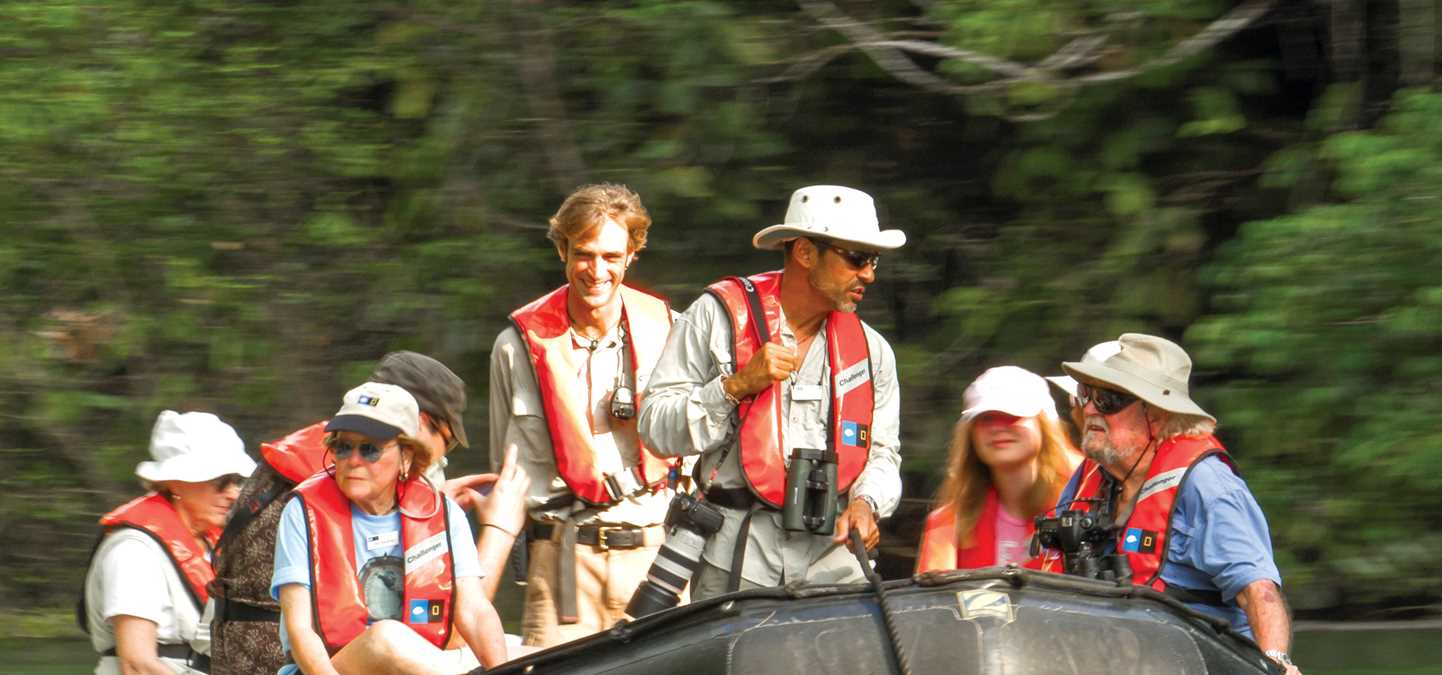Call +1.800.397.3348 or contact your travel advisor
Leader
Expedition Leader
Our expedition leaders are seasoned explorers who embody the pioneering spirit of National Geographic-Lindblad Expeditions. They are attuned not only to the conditions around them, but also to the needs of the guests on board. Beyond their role as expedition leaders, they are also trained naturalists, marine biologists, or historians with years of experience in the field, and they are deeply knowledgeable about the geographies where they sail.
An expedition depends on flexibility and the ability to take advantage of unexpected opportunities. Our expedition leaders are constantly tapped into their surroundings, often revising the day’s route and activities to make the most of wildlife sightings and serendipitous moments.
They are undeterred when weather or ice conditions preclude a certain landing: they know the lay of the land, and simply collaborate with the captain to reach a more protected spot so that guests can go ashore to explore. When a pod of humpbacks or an emperor penguin appears or the northern lights illuminate the sky, they won’t hesitate to turn the ship around for a better view and make an announcement even if it means interrupting dinner.
Sometimes they’ll veer off course entirely for a once-in-a-lifetime experience: a quick-thinking expedition leader in the Galápagos made the call to redirect the ship when Wolf Volcano erupted, and our guests were some of the only eyewitnesses to its lava spilling into the sea. We give our expedition leaders our full confidence, empowering them to make decisions that deliver the most extraordinary experience possible.
Our expedition leaders are seasoned explorers who embody the pioneering spirit of National Geographic-Lindblad Expeditions. They are attuned not only to the conditions around them, but also to the needs of the guests on board. Beyond their role as expedition leaders, they are also trained naturalists, marine biologists, or historians with years of experience in the field, and they are deeply knowledgeable about the geographies where they sail. ...
Read more
Expedition staff are subject to change.
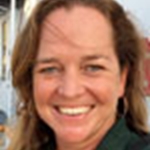
Emma Ridley
Born of a Scottish father and English mother, Emma enjoyed an international upbringing because of her father’s job as a foreign correspondent. Although her family eventually settled in Rome, Emma's schooling was conducted in French, having started her studies in Brussels, Belgium and finishing at the Lycée Français de Rome in 1988. While at Heriot-Watt University in Edinburgh, Emma combined her fascination with biology with her love of the seas, receiving a degree in applied marine biology. She is a keen diver, and while at school worked part-time as a diver in an aquarium. Two months after graduation, having seen the job advertised at her university, Emma moved to Ecuador and began her fascinating job as a naturalist and dive guide in the Galápagos archipelago. Emma has worked as a naturalist and expedition leader with Lindblad Expeditions-National Geographic in Galápagos since 1997. She has also worked as expedition leader, undersea specialist, and dive master for in regions as diverse as the Columbia River, Central America, Europe, and the South Pacific. She was granted permanent residency in the Galapagos and has now called the islands home for over half her life! She built her home on the island of Santa Cruz, where she raises her two daughters, Amelia and Rebecca. Since 2008, she works from home for Lindblad Expeditions as Galápagos Field Staff Manager. She also gets involved in local conservation projects and volunteers as a diver in ecological monitoring programs with the Charles Darwin Research Station. Nonetheless, she tries to get back out into the field with Lindblad Expeditions as much as possible, since she loves being out at sea and sharing her passion for the natural world with others.
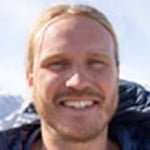
Taylor Butz
Born and raised on Vashon Island in Washington State, Taylor grew up exploring the forests behind his house and attending the island’s Pirate Camp during the summers. He considers himself lucky to have grown up in a place that allowed him to experience the mountains and waterways of the Pacific Northwest. For college Taylor escaped the rain and migrated south to San Diego where he attended San Diego State University. It was here he studied film and fell in love with surfing. During his summer breaks he began working as a cabin steward and deckhand for Lindblad Expeditions in Alaska. While spending his summers with the close knit crew onboard and witnessing the wildlife and epic scenery of Southeast Alaska, Taylor knew that he had found a career path that would fulfill his need for travel. Shortly after college Taylor began working full time as a Video Chronicler for Lindblad Expeditions. He got to experience expeditions from Antarctica to Borneo and many, many places in between, all while being able to film and document amazing moments throughout the voyages. When off the ship you will find Taylor out at the remote beaches of Washington state with a surfboard in hand and a backpack on his back. Taylor is passionate about spending as much time in the water as possible and finds peace in those serene moments sitting in the ocean waiting for the next wave.
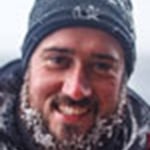
Peter Wilson
Peter comes from the town of Cobh, County Cork, on the south coast of Ireland. He is both a working archaeologist and a naturalist. Growing up and living next to the sea, he developed a fascination with whales and dolphins, along with birds and the broader natural world. Ever varied in his interests, he studied English at University College Cork and went on to complete a master’s degree in Old English. A desire for more hands-on, outdoor work led him to a slight change of course, into the study of archaeology. After combining his twin loves of the humanities and nature, Peter's main areas of research at present are archaeozoology and maritime archaeology. He has a particular interest in the archaeology of marine mammal exploitation and the archaeology of extreme environments. Along with his research, Peter also works for the commercial sector as a field archaeologist throughout the south of England. While he very much considers himself to be an outdoor person, Peter still has a great love of the fruits of human culture. He has a deep interest in everything from art history and visual culture, to the history of food and drink. He brews beer and wine when he has the time, and also considers himself to be quite a serious musician.
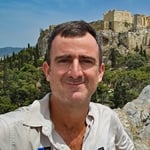
David Brotherson
Growing up near Sydney, Australia, David’s fascination for world history and archaeology was born in the civilization's, history and mythology of the ancient Mediterranean. These interests were nurtured at the University of Sydney as an archaeology major. As his undergraduate studies neared completion, David started travelling the world, which would culminate in a life-changing trip to Southeast Asia. There, in Cambodia, he stood amongst the enigmatic temples of Angkor Wat, and a new life path began to unfurl. The opportunity then arose to work with the university’s Greater Angkor Project, an international, multi-disciplinary research program into the city’s development, daily life and decline. David’s research investigates Angkorian urbanism and decline, using remote sensing, field survey and GIS to analyse its urban history, demise and transformation. He received his PhD in Archaeology from the University of Sydney in 2020. David is a long-term resident of Siem Reap, Cambodia, where he has lectured and led tour groups for over a decade. He regularly travels with National Geographic-Lindblad Expeditions throughout Asia and Europe. His archaeological research in Cambodia is ongoing, as is his passion for world history, educational tourism, the great outdoors, playing guitar and tennis.
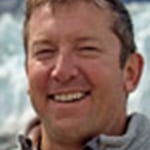
John Mitchell
Raised in the mountains of Crested Butte, Colorado, John has always been a “child of nature,” where the natural world around him was life’s classroom. After graduating from Colorado State University with degrees in Speech Communication and Biology, John joined Lindblad Expeditions. Over the years with Lindblad he tried to learn every aspect of vessel operations while spending his “free time” learning all that he could from the naturalists on board. His time off the boats was spent traveling throughout North, South, and Central America learning more about the areas. John left “for a spell” to pursue a post-graduate degree in marine ecology in Hawaii, fell in love with island life and now calls Maui home. Most recently working as a Coastal Management Specialist for NOAA Pacific Region, he has also been the Program Director for an educational non-profit whose mission was to excite youth about science and all things natural. John has also served as a naturalist, junior high and high school marine science field teacher. He also worked on the Marine Turtle Research Project, and spent five years as the Fish and Habitat Monitoring Coordinator for the State of Hawaii. John is passionate about the need to re-connect our youth to the environment in order to sustain meaningful education.
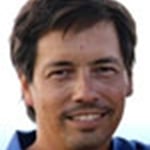
Alex Searle
Born in Chile and raised in Argentina, Alex spent his childhood living in different parts of these countries and getting to know the local cultures. Alex studied Journalism at the University of Chile and did post graduate studies at UBC in Vancouver, Canada. Working as a Chilean TV producer for years, Alex worked in the news department doing research, and produced a successful late night show as well as a wildlife show that did stories all over America. Since he was a kid his life’s dream was to visit Easter Island, or Rapa Nui in the local language. He visited during his university years, together with his wife, Terangi, who was born on this unique Pacific island. Alex has worked for years with Lindblad Expeditions in Easter Island, and also works as a guide all along Chile. An avid diver and photographer, he has contributed his photos to books about Easter Island. His love for the cultural past and present of Rapa Nui, Polynesia, and other areas of South America, as well as his passion for wildlife and nature, make him a passionate guide. He is excited to share his understanding and knowledge with fellow travelers.
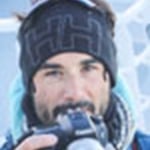
Stefano Pozzi
Stefano is originally from Italy and nature has always been the greatest of his passions. Spending time outdoors is his daily priority with a special devotion rock climbing during summer, accompanied by ski and snowboarding during winter. Stefano has a mathematical background and graduated with honors at the University of Milan after 4 years of combined studies in Italy, India, Norway and Sweden. This represented for him the final fulfillment of his student duties and he celebrated by taking off to a 3-month solo bike-trip from Milan to Lisbon and back, following the pilgrimage route "Camino di Santiago" and covering a distance of 8000km. The taste of freedom gained through his bike tour and his travels led Stefano to move to the wildernesses of Norway in 2011, working as ski instructor and tour guide. In search of new challenges, in 2014 Stefano moved to the very high arctic of Svalbard and here he took the university education of Arctic Nature Guide and increased his skills on flora and fauna of the arctic. Today Stefano is a full-time outdoor professional and has working experience from Arctic, Antarctic, Italy, Norway, Australia and Nepal. His expertise is long ski and hike expeditions and he logs more than 100 field days and tent nights in the Norwegian Arctic. His everyday mission as naturalist is to share his knowledge and bring his guests even closer to nature, be able to provide them with the means to "live" in the wilderness rather than merely survive. In return he loves to learn something new every day from his guests.
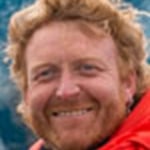
Russell Evans
Russ Evans is a sixth-generation Falkland Islander now living in Orkney, Scotland. In 1997, he was drawn away from his work on the family farm by the lure of the sea. Since then, he has made his living at sea. As a licensed captain, Russ has been part of a variety of marine endeavors, including commercial tugs, dive boat support, scientific research, sightseeing tours, cruise ships, and since 2003, an expedition leader on expedition ships worldwide but specializing in the polar regions. Russ is committed to the environmental impact of tourism and its future in the Antarctic through his advocacy with the International Association of Antarctica Tour Operators (IAATO), and shares their commitment to responsible tourism. Although his chosen place on the globe is the Antarctic and its surrounding waters and islands, he is as at home in the far north as he is in the far south. Also having led expeditions in lower latitudes and warmer climates, his passion for the oceans is coupled with keen expertise on the natural history of these places of extremes. His intimate knowledge of, and love for, remote islands and hard-to-reach corners of the world, (especially if they can only be reached by sea), makes him a natural for sharing his passion with others. His adventuresome spirit, along with his thirst to deliver the most extraordinary experiences to the guests of each expedition, provides a compelling and insight-filled backdrop for exploring.
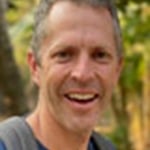
Jeff Phillippe
Jeff was raised in upstate New York and completed his B.A. in geography at Middlebury College in Vermont. He attained his master’s degree in water resource science at Oregon State University where his research focused on glacier hydrology in the Pacific Northwest of the U.S. He spent most of his 20's teaching Earth sciences and geography at the secondary and university level, while taking his summers off to lead wilderness and climbing expeditions throughout the continental U.S., Alaska, and Canada. As Jeff entered his 30's the travel bug won him over, and he spent the next ten years on the road, traveling and guiding around the world. As a fluent Spanish speaker, he led more than 100 expeditions in Latin America, including water resource development projects in Guatemala and Bolivia, six seasons of mountain guiding in Peru and Patagonia, and most recently cultural tours around Cuba. Now older and wiser, Jeff is enjoying life as a full-time Expedition Leader on Lindblad vessels. Jeff is passionate about the ecosystems and geopolitics of watersheds; he especially enjoys leading groups on the Amazon, Columbia and Mekong Rivers. And given his background in glacier research, he revels in taking groups up to Alaska and Antarctica to explore glaciers and fjords. His outdoor endeavors include first ascents in Canada, South America, and the Middle East, a canoe-descent of the Grand Canyon, a one-day climb of the face of El Capitan and guiding multiple parties to 6,000+ meter peaks in the Andes. In his free time, Jeff enjoys photography, marathon running, creating maps, and planning off-the-beaten path journeys through Africa and Asia.

Andy Wolff
A Midwestern kid with an insatiable curiosity about places far and foreign, Andy has converted a lucky break after college into a career at sea. From swabbing the decks to advocating for artisans and zooming in Zodiacs, he knows the operation from every department on board. What keeps him fresh after nearly two decades working at sea is waking up somewhere new every morning, the day ahead a blank slate with no way of knowing what marvels nature and serendipity may bring his way. Andy looks forward to sharing this sense of wonder and possibility with guests as they venture together into new realms with Lindblad Expeditions-National Geographic. Having traveled everywhere from Madagascar to Moscow, Andy’s happy place is amongst icebergs and whales on a sunny Antarctic summer day. When not aboard ship, he often winters near tropical seas, typically hunting below the water’s surface for nudibranchs. A happy Pacific Northwest transplant, Andy now calls the evergreen forests of Olympia, Washington home. There he enjoys crafting homemade soap, trail running, and consuming copious quantities of coffee. If you end up sharing a table in the dining room one evening, be sure to ask about his international gold medal in barbershop. Andy was thrilled to join the Lindblad Expeditions team in 2010. Among so much photographic talent, he is a firm believer that the best camera is the one you always have with you. For a look at life through his lens, investigate instagram.com/travelingandy.
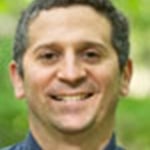
Dave Katz
Dave grew up in a village in the heart of the rural Finger Lakes region of New York and at an early age fell in love with the outdoors. Dave’s mother, a high school earth science and biology teacher turned weekend hikes into informative lessons. The beautiful gorges, various lakes and hard wood forests made a lasting impression on him. At university, he continued to pursue his growing interest in the natural world through study of Geology and Ecology. At this time, he joined the Outdoors Club and began leading caving, rock climbing and winter camping trips with fellow students. After obtaining a bachelors degree in Geology at Binghamton University, he set out to explore the world, working seasonally as a wilderness field instructor while in the offseason pursuing a growing interest in photography and storytelling. Inspired by the desire to explore and learn, his prolific travels have drawn him to over 85 countries on all seven continents. His storytelling work has been published on television, in print and on the internet with HBO, Nat Geo Kids, PBS Nature and Outside Magazine. Identifying strongly with the concept of “Tenacity in Pursuit,” he aims to inspire curiosity through his work as a field educator and professional storyteller. Since 2004, he has led over 20 exploratory tree climbing expeditions to forest canopies around the world through his work with Cornell University’s Tree Climbing Institute. Always excited and ready for the next location, challenge or project, he is a proud member of the Lindblad-National Geographic Expedition Staff team.
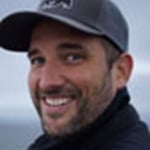
Shawn Lucas
Shawn began his journey with Lindblad Expeditions in 2009 and since inception has found himself in various aspects of ship and expedition operations. What led him to Lindblad Expeditions? When you grow up in upstate New York, it’s nearly impossible to resist the urge to explore—especially as a kid. Shawn’s love of the outdoors began at an early age when he would play “fugitive”, a variation of the game tag, with his neighborhood friends in the forest behind his home in Wappingers Falls, NY. As long as he can remember, the forest had always beckoned and sparked a strong sense of exploration and wanderlust. When he was just twenty-one, he completed a six month, 2,167 mile thru-hike on the Appalachian Trail, a journey that would shape his adult life. He was hooked. Shawn went on to tackle other thru hikes of note including the Pacific Crest, High Sierra, and John Muir Trails. He also led a six person expedition up three 6,000 meter peaks in the Peruvian Andes. Having discovered his passion he sought out an undergraduate school that would stimulate him intellectually as well as being mere steps from adventure. He ended up at Paul Smiths College situated in the Adirondack Mountains of New York State. Shawn earned his Bachelor of Science degree in Recreation, Adventure Travel & Eco-tourism with a minor in Forestry. Whether in the forest or on the water, his passion for the outdoors is always the key factor for planning his future or the next adventure.
Showing 12 of 24

